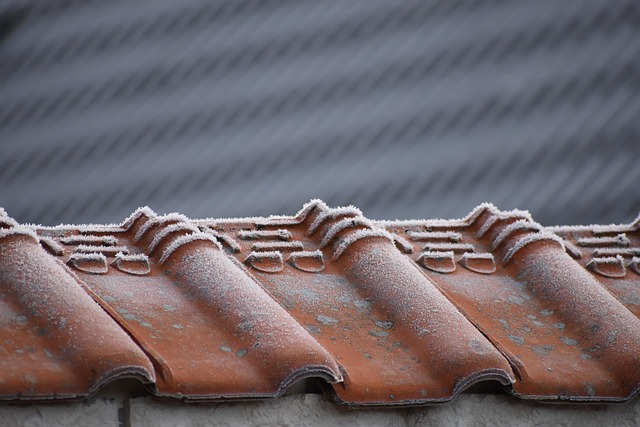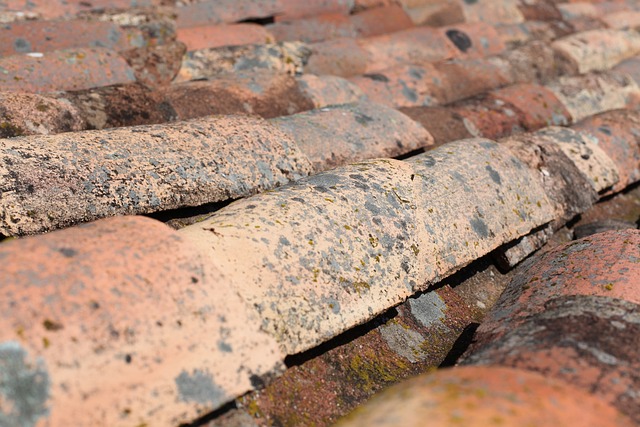Built-up roofing systems, a commercial industry staple, feature multi-layered constructions of bitumen, fabric reinforcement (like felt paper or glass fiber mats), and gravel/stone coatings. These systems offer exceptional durability, strength against environmental factors, and reliability for structures like commercial buildings and warehouses. A competent built-up roofing company provides expert installation and tailored maintenance services for these robust multi-ply roofs and gravel roof systems. Regular maintenance, advocated by such companies, sustains optimal performance and extends the lifespan of these popular flat commercial building roofs.
“Uncovering the complexities of multi-layered built-up roofing systems, this comprehensive guide is tailored for commercial building owners. From understanding the intricate design to exploring the materials and benefits, we demystify these robust structures. Whether you’re considering installation or simply seeking knowledge, this article offers valuable insights. Learn about the layer-by-layer construction, the role of specialized built-up roofing companies in the installation process, and strategies for maintaining longevity. Optimize your commercial property’s protection with the expert insights on built-up roofing.”
- Understanding Built-Up Roofing Systems: A Comprehensive Overview
- The Layers of a Multi-Layered Built-Up Roof
- Materials Used in Commercial Built-Up Roofing
- Advantages and Disadvantages of Built-Up Roofing for Flat Commercial Buildings
- Installation Process: What to Expect from a Built-Up Roofing Company
- Maintenance and Longevity of Multi-Layered Built-Up Roofing Systems
Understanding Built-Up Roofing Systems: A Comprehensive Overview

Built-up roofing systems have long been a staple in the commercial roofing industry, especially for flat or low-slope structures. These robust and multi-layered constructions offer exceptional durability and protection against various environmental factors. A built-up roof typically consists of multiple layers, carefully engineered to provide enhanced strength and weather resistance.
At its core, this type of roofing involves layering bitumen (a form of asphalt) and fabric reinforcement, such as felt paper or glass fiber mats. These layers are then topped with a gravel or stone coating, creating a protective barrier that can withstand extreme temperatures, heavy loads, and intense UV radiation. The term ‘built-up’ accurately describes the process, where each successive layer adds strength and protection, making it an ideal solution for commercial buildings, warehouses, and other structures requiring a reliable and long-lasting roofing system. A reputable built-up roofing company will be well-versed in this technique, offering expert installation and maintenance services for multi-ply roofs and gravel roof systems alike.
The Layers of a Multi-Layered Built-Up Roof

A multi-layered built-up roofing system, a common choice for flat commercial buildings, is composed of several key components that work together to provide superior protection and durability. The base layer, typically a bitumen roofing membrane, forms the foundation by sealing the roof deck and offering a flexible barrier against leaks. This essential layer is then reinforced with one or more additional plies, creating a multi-ply roof.
Between these plies, gravel roofs—consisting of fine aggregates bonded with asphalt—act as a protective layer, adding weight and further safeguarding the structure from environmental elements. Each successive layer increases the system’s overall strength, tear resistance, and fire retardance. This multi-layered design not only ensures a robust barrier against weather but also provides an effective, long-lasting solution for commercial roofing needs, making it a preferred choice among built-up roofing companies.
Materials Used in Commercial Built-Up Roofing

Commercial built-up roofing systems are renowned for their durability and versatility, making them a popular choice for flat roofs on various commercial buildings. The primary materials used in these systems play a pivotal role in ensuring their longevity and performance. A typical multi-ply roof comprises several layers, each serving a specific function. At the base lies a layer of bitumen roofing, which acts as a waterproof barrier, protecting the underlying structure from harsh weather conditions. This is followed by a fabric reinforcement layer, enhancing the system’s strength and tear resistance.
The uppermost layer often involves a gravel roof or a protective membrane, adding an extra shield against UV radiation and extreme temperatures. The combination of these materials creates a robust, multi-layered defense, making commercial built-up roofing systems a reliable and cost-effective solution for flat roofing applications. Many established built-up roofing companies offer tailored solutions, considering factors like local climates, building specifications, and long-term maintenance requirements to ensure the optimal performance of these complex roof structures.
Advantages and Disadvantages of Built-Up Roofing for Flat Commercial Buildings

Built-up roofing has been a popular choice for flat commercial buildings due to its durability and cost-effectiveness. This multi-layered system involves alternating layers of bitumen and reinforcement fabrics, culminating in a gravel roof that provides excellent protection against extreme weather conditions. It is particularly suitable for low-sloped or flat roofs, offering a robust solution that can withstand heavy loads and resist fire, making it a preferred option among built-up roofing companies.
However, the system also presents certain challenges. The installation process requires skilled labor to ensure proper lapping and sealing of each layer, which can increase costs and lead times. Additionally, while bitumen roofing is reflective, multiple layers may result in reduced energy efficiency compared to modern alternatives. Moreover, gravel roofs demand regular maintenance to keep the gravel surface intact and prevent damage from debris or foot traffic. Despite these drawbacks, many built-up roofing companies continue to recommend this method for its superior longevity and protection, especially in regions with harsh climates.
Installation Process: What to Expect from a Built-Up Roofing Company

When it comes to installing a multi-layered built-up roofing system on your commercial building, a professional built-up roofing company is essential. The process typically begins with a thorough inspection of the existing roof and preparation for the new layers. Skilled technicians will lay down a series of alternating bitumen roofing membranes and gravel roofs, creating a durable, multi-ply roof designed to withstand the elements.
During installation, you can expect precise measurements, careful placement of materials, and meticulous attention to detail. A reputable built-up roofing company will ensure proper sealing at joints and laps, crucial for maintaining the system’s integrity. This methodical approach results in a robust roof that offers superior protection, making it an ideal solution for flat commercial structures.
Maintenance and Longevity of Multi-Layered Built-Up Roofing Systems

Multi-layered built-up roofing systems, a common choice for flat commercial buildings, offer excellent protection against harsh weather conditions. Regular maintenance is key to ensuring their longevity and optimal performance. A reputable built-up roofing company recommends periodic inspections to identify any signs of damage, such as cracks or missing components.
During maintenance, professionals can replace worn-out layers, reinforce weak spots with additional bitumen roofing or gravel roof, and ensure the overall integrity of the multi-ply roof. This proactive approach not only extends the life of the roofing system but also prevents costly repairs or replacements in the future.
